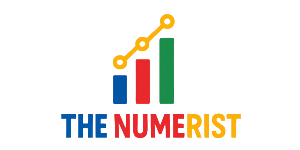TECH
Prodigy: Early Internet Pioneer

The Digital Dawn: When Online Access Was a Novelty
In the late 1980s and early 1990s, home internet access was virtually unheard of. Computers like the IBM PC and Apple Macintosh were beginning to enter households, but they operated mostly as standalone machines. There was no Google search, no email as we know it, and certainly no streaming. Instead, tech-savvy consumers relied on dial-up modems to connect to online services—platforms that offered curated content and basic forms of communication.
Among the early leaders in this space were CompuServe, America Online (AOL), and Prodigy Services Corporation. Unlike the decentralized web we navigate today, these were proprietary networks with controlled user experiences. They provided news, weather updates, email, message boards, games, shopping, and even stock tracking.
The Founding of Prodigy Services Corporation
Prodigy was founded in 1984 as a joint venture between IBM, Sears, and later CBS. Initially branded as “Trintex,” the company set out to create a revolutionary way for consumers to engage with content, businesses, and each other. The idea was to blend the best of television and computers to offer interactive information services—a novel concept at the time.
By 1988, the platform was officially launched under the name Prodigy. The company’s goal was clear: bring online access to the average home user. At its peak in the mid-1990s, Prodigy had over 2 million subscribers, making it one of the largest online service providers in the United States.

A Graphical Leap Ahead of Its Time
One of Prodigy’s most notable achievements was its graphical user interface (GUI), which predated the web browsers that would come later. This was significant because most online services at the time were text-based and required a steep learning curve. Prodigy’s GUI made it easy for users to navigate services with simple commands and visual cues.
This user-friendliness set it apart from competitors like CompuServe, which relied heavily on command-line interfaces. With Prodigy, users could check sports scores, weather updates, or even shop online with just a few clicks—at a time when the idea of e-commerce was still in its infancy.
Early Innovations in Online Communication
Prodigy introduced features that would become staples of internet life. For example, it offered email capabilities well before they became mainstream. Although the system was initially limited—users could only email within the Prodigy network—it laid the groundwork for widespread digital communication.
The platform also included bulletin boards and forums, precursors to modern social networks and Reddit-style communities. Users gathered in these spaces to discuss hobbies, ask for advice, or debate current events. These early forms of user-generated content created a sense of community long before the advent of social media platforms like Facebook and Twitter.
Content, Services, and the Beginnings of Online Commerce
Long before Amazon dominated the online retail space, Prodigy allowed users to shop from their computers. The service included a feature known as Prodigy Online Shopping, where users could browse and purchase products from participating merchants.
In addition to shopping, Prodigy offered real-time stock market tracking, educational content, health advice, and even access to encyclopedic databases. In this way, it was more than an online service—it was an early attempt at creating a digital ecosystem.

Challenges and the Rise of the World Wide Web
Despite its many innovations, Prodigy faced numerous challenges that would eventually lead to its decline. The most significant was the emergence of the World Wide Web and open internet access. As users began exploring the broader internet using browsers like Mosaic and later Netscape Navigator, proprietary networks started to seem restrictive.
Additionally, Prodigy’s reliance on a flat-rate subscription model clashed with its growing user base. As more users demanded email access, forum interactions, and content downloads, the infrastructure struggled to keep up without incurring massive operational costs.
Another blow came from the company’s initial refusal to embrace open web protocols. While competitors like AOL transitioned into internet service providers (ISPs) and embraced web browsing, Prodigy was slow to adapt. This delay allowed rivals to outpace it in a rapidly evolving market.
Prodigy’s Legacy in the Digital Age
Despite its eventual decline, Prodigy’s legacy remains important. It pioneered online community-building, graphical navigation, and interactive content long before these features became standard. It also showed that consumers were willing—and eager—to embrace the digital world, provided they were given the right tools.
The platform helped establish norms around user interface design, network-based services, and even online etiquette, which influenced future platforms that built the modern internet. For many early users, Prodigy was their first real taste of what the internet could offer—and it was both exciting and transformative.
FAQs About Prodigy and Early Online Services
Q1: What was Prodigy and when did it start?
Prodigy was an early online service provider launched in 1988 as a joint venture between IBM and Sears. It aimed to bring internet-like services such as email, shopping, and news to home users before the rise of the World Wide Web.
Q2: How did Prodigy work?
Users connected via a dial-up modem and accessed a graphical interface that offered curated content, email, message boards, and shopping options. The interface was one of the first to use visual icons and menus rather than text commands.
Q3: What made Prodigy different from AOL or CompuServe?
Prodigy was known for its early graphical user interface and emphasis on ease of use. It targeted mainstream users rather than just tech enthusiasts and introduced several innovative features ahead of its time.
Q4: Why did Prodigy decline?
Prodigy struggled to adapt to the open web, which made it less appealing as the internet became more accessible. Competitors who embraced web browsers and open access outpaced it in user growth and technological advancement.
Q5: Can I still access Prodigy today?
No, Prodigy ceased operations in the early 2000s. However, its impact lives on through many of the online services and experiences we take for granted today.
Conclusion
Prodigy, as an early internet pioneer, was instrumental in bringing digital connectivity into homes long before it became common. From its user-friendly design and early e-commerce tools to its trailblazing email system and interactive forums
TECH
Saturn School App: 3 Powerful Benefits Unveiled

If you’re a student, parent, or educator, you’ve probably heard the buzz about the saturn school app. In 2025, managing school schedules, assignments, and social life can feel overwhelming. That’s where the Saturn School App steps in, promising to simplify your academic world and keep you connected with classmates like never before.
But what exactly is the Saturn School App? How does it work, and why are so many students ditching their old planners for this new digital solution? In this deep dive, we’ll explore everything you need to know about the Saturn School App, from its unique features to real-life success stories, and even answer the most common questions people are searching for right now.

What Is the Saturn School App? (And Why Is Everyone Talking About It?)
Let’s start with the basics: What is Saturn app? The Saturn School App is a mobile platform designed specifically for high school and college students. It’s not just another calendar or to-do list. Instead, it’s a social scheduling tool that helps students organize their classes, assignments, extracurriculars, and social events—all in one place.
Unlike generic calendar apps, the Saturn School App is built around the unique rhythms of student life. It integrates with your school’s schedule, lets you connect with classmates, and even offers features like group chats, reminders, and real-time updates. Think of it as your digital command center for everything school-related.
“I used to forget about quizzes and club meetings all the time. Since I started using the Saturn School App, I haven’t missed a thing—and I actually feel less stressed!” — High school junior, 2025
Saturn Calendar: The Heart of the App
One of the standout features is the Saturn calendar. Unlike traditional planners, the Saturn calendar is dynamic and interactive. It automatically imports your class schedule, updates for holidays or special events, and lets you add personal reminders with just a tap.
Why Students Love the Saturn Calendar
- Automatic Schedule Sync: No more manual entry. The app pulls your school’s schedule and updates it in real time.
- Color-Coded Events: Instantly see what’s coming up—classes, tests, sports, and social events are all easy to spot.
- Group Planning: Coordinate with friends for group projects or study sessions right from the calendar.
The Saturn calendar isn’t just about organization—it’s about making your school life more manageable and less stressful.
Saturn App for School: More Than Just a Planner
So, what makes the Saturn app for school different from other scheduling tools? It’s the social features. Saturn isn’t just about keeping track of your own schedule; it’s about staying connected with your classmates and school community.
Key Social Features
- Class Group Chats: Instantly message everyone in your class or club.
- Event Invites: Plan parties, study groups, or club meetings and send invites directly through the app.
- Real-Time Updates: Get notified if a class is canceled or a meeting is rescheduled.
This social layer is what sets Saturn apart. It’s not just a tool—it’s a community.
Saturn Schedule: How It Works
The Saturn schedule feature is all about customization. You can add, edit, or remove classes and events as your semester evolves. The app also supports block schedules, rotating days, and even custom periods for schools with unique timetables.
How to Set Up Your Saturn Schedule
- Import Your School: Search for your school and import the official schedule.
- Customize Your Classes: Add electives, clubs, or sports.
- Set Reminders: Never miss a test, assignment, or event.
- Share with Friends: Let your friends see your free periods for easier planning.
The Saturn schedule adapts to your needs, making it perfect for students with busy, ever-changing lives.
Saturn Web Browser: Access Anywhere, Anytime
While the Saturn School App is primarily mobile, the Saturn web browser version lets you access your schedule and messages from any device. This is a game-changer for students who use school computers or want to check their calendar from a laptop.
Why the Saturn Web Browser Matters
- Cross-Device Sync: Your schedule and messages are always up to date, no matter where you log in.
- Accessibility: Great for students who don’t have a smartphone or prefer working on a bigger screen.
- Easy Sharing: Copy and share your schedule with parents or teachers in seconds.
Real-Life Example: How Saturn School App Saved the Day
Let’s look at a real-life scenario. In early 2025, a group of students at a large public high school were struggling to coordinate a big science fair project. With different class schedules and after-school commitments, finding a time to meet seemed impossible.
One student suggested using the Saturn School App. Within minutes, they synced their schedules, found overlapping free periods, and set up group chats for quick communication. The project was a success, and the students credited Saturn for making it all possible.
The Pros and Cons of the Saturn School App
Pros
- All-in-One Solution: Combines scheduling, messaging, and event planning.
- Student-Centric Design: Built specifically for the needs of high school and college students.
- Social Integration: Makes it easy to connect and collaborate with classmates.
- Automatic Updates: No more manual schedule changes.
Cons
- Privacy Concerns: As with any social app, students and parents should review privacy settings.
- School Support Needed: Works best when your school is officially supported.
- Learning Curve: Some students may need time to get used to all the features.
Features and Usability in 2025
The Saturn School App has evolved rapidly, with new features rolling out every semester. Here’s what’s new in 2025:
AI-Powered Reminders
The app now uses AI to predict when you might need extra reminders—like before big exams or project deadlines.
Enhanced Privacy Controls
Students can now control who sees their schedule, join private groups, and report inappropriate behavior directly in the app.
Integration with School Portals
Many schools now integrate Saturn with their official portals, making it even easier to keep everything in sync.
Customizable Themes
Personalize your Saturn calendar with new color schemes, stickers, and widgets.
Saturn School App vs. Other Scheduling Tools
How does Saturn stack up against other popular apps? Here’s a quick comparison:
| Feature | Saturn School App | Google Calendar | Notion | Remind |
|---|---|---|---|---|
| Student-Centric Design | Yes | No | No | No |
| Social Features | Yes | Limited | No | Yes |
| Automatic School Sync | Yes | No | No | No |
| Group Messaging | Yes | No | No | Yes |
| Custom Schedules | Yes | Yes | Yes | No |
Saturn’s focus on student life and social integration makes it a standout choice for 2025.
What Is Saturn App? A Closer Look
If you’re still wondering, what is Saturn app?—think of it as the next evolution in student productivity. It’s not just about keeping track of classes; it’s about making school life easier, more social, and a lot more fun.
The app’s intuitive design, real-time updates, and focus on community have made it a must-have for students across the country.
Saturn Calendar: Tips and Tricks
Want to get the most out of your Saturn calendar? Here are a few expert tips:
- Sync Early: Import your schedule at the start of the semester for a stress-free setup.
- Use Color Coding: Assign different colors to classes, clubs, and social events for quick reference.
- Set Multiple Reminders: For big tests or projects, set a reminder a week before and the night before.
- Share with Parents: Keep your family in the loop by sharing your calendar link.
Saturn App for School: Safety and Privacy
With any app that connects students, safety is a top concern. Saturn has implemented several features to keep users safe:
- Verified School Communities: Only students from your school can join your school’s group.
- Report and Block: Instantly report or block users who violate community guidelines.
- Private Messaging Controls: Choose who can message you or see your schedule.
Parents and educators can rest easier knowing Saturn takes privacy seriously.
Saturn Schedule: For Clubs, Sports, and More
The Saturn schedule isn’t just for classes. Students use it to manage:
- Club Meetings: Set recurring events and send reminders to members.
- Sports Practices: Coordinate with teammates and coaches.
- Volunteer Hours: Track commitments and share your availability.
The flexibility of the Saturn schedule makes it a powerful tool for all aspects of student life.
Saturn Web Browser: Accessibility for All
The Saturn web browser version ensures that no student is left out. Whether you’re on a Chromebook at school or a desktop at home, you can access all the features of the app.
- No Download Needed: Just log in from any browser.
- Perfect for Parents: Parents can check schedules without needing a smartphone.
- Great for Teachers: Teachers can coordinate with students and send announcements.
Real User Quote: Saturn School App in Action
A college freshman shared,
“I was nervous about keeping up with my new schedule, but Saturn made it so easy. I even made new friends through the group chats!”
This kind of feedback is common, as more students discover how the app can transform their school experience.
FAQs
1. What is the Saturn School App used for?
The Saturn School App is designed to help students manage their schedules, connect with classmates, and stay organized. It combines a dynamic calendar, group messaging, and real-time updates in one easy-to-use platform.
2. How does the Saturn calendar work?
The Saturn calendar automatically imports your school’s schedule, color-codes events, and lets you add personal reminders. It’s interactive, customizable, and designed for the unique needs of students.
3. Is the Saturn app for school safe to use?
Yes, Saturn has robust privacy controls, verified school communities, and reporting features to keep students safe. Always review privacy settings and use the app responsibly.
4. Can I use Saturn on a web browser?
Absolutely! The Saturn web browser version lets you access your schedule and messages from any device, making it perfect for students, parents, and teachers alike.
Final Thoughts
In 2025, the Saturn School App stands out as a powerful, student-focused tool that goes beyond basic scheduling. With its dynamic Saturn calendar, social features, and cross-platform accessibility, it’s no wonder students everywhere are making the switch.
TECH
Face 3: Unleashing the Playful Power of Digital Expression

face 3 might sound mysterious, but it’s actually a playful way to describe a specific text-based emoticon: :3. This symbol, with its wide eyes and cat-like smile, has been around since the early days of internet chatrooms. It’s often used to convey cuteness, playfulness, or a lighthearted mood.
But in 2025, face 3 has evolved. It’s not just a text emoticon anymore—it’s a full-fledged emoji, a meme, and even a shorthand for a certain vibe in digital conversations. You’ll see it in school group chats, on social media, and even in professional Slack channels (yes, really).
The Psychology Behind Face 3 and Digital Expressions
Why do we love using face 3, the embarrassed emoji, or the school emoji? The answer is simple: emojis and emoticons help us express feelings that words alone can’t capture. In a world where so much of our communication is digital, these little faces add warmth, humor, and nuance.
A recent tweet captured it perfectly:
“Sometimes a simple face 3 says more than a whole paragraph. It’s my go-to when I want to lighten the mood.”
School Emoji: The New Language of Students
If you’re a student or a teacher, you’ve probably noticed the rise of the school emoji in digital communication. Whether it’s used to mark homework reminders, celebrate achievements, or just add some fun to a class group chat, the school emoji has become a staple in the digital classroom.
How Students Use School Emoji
- To signal school-related topics in group chats
- As a playful way to say “see you at school”
- To express pride in academic achievements
Teachers and the School Emoji
Educators are catching on, too. Many teachers use the school emoji in announcements, feedback, and even digital lesson plans to make communication more engaging.
Fcae, Facwe, Facd: The Typo Trend
Ever typed “fcae” instead of “face,” or seen “facwe” or “facd” in a chat? You’re not alone. These typos have become so common that they’re almost a meme in themselves. In fact, some people use them intentionally to add a touch of humor or self-deprecation to their messages.

Why Do We Make These Typos?
- Fast typing on mobile devices
- Autocorrect fails
- Playful internet culture
When Typos Become Trendy
In 2025, it’s not unusual to see someone say, “Oops, wrong fcae!” or “That’s my facd when I see homework.” These playful mistakes make digital conversations feel more human and relatable.
Embarrassed Emoji: Expressing Awkwardness in a Digital World
The embarrassed emoji (think 😳 or 🥲) is a lifesaver when you want to express awkwardness, shyness, or a “facepalm” moment. It’s especially popular among students and young professionals who want to soften the blow of a mistake or lighten a tense conversation.
Real-Life Example
A student shared, “I sent the wrong homework file to my teacher and just replied with the embarrassed emoji. It made the whole thing less awkward, and my teacher even laughed about it.”
The Power of Digital Faces in Building Connection
In a world where so much of our interaction happens through screens, digital faces like face 3, the school emoji, and the embarrassed emoji help us stay connected. They add personality, emotion, and even a sense of community to our messages.
Why Digital Faces Matter
- They humanize digital communication.
- They help us express complex emotions quickly.
- They make group chats and online learning more fun.
Face 3 in Pop Culture and Memes
Face 3 isn’t just for texts—it’s a pop culture phenomenon. You’ll find it in memes, TikTok captions, and even as a reaction in YouTube comments. Its playful, cat-like vibe makes it perfect for expressing everything from “I’m being cute” to “I’m not taking this too seriously.”
The Meme Factor
Memes featuring face 3 often go viral because they’re relatable and easy to remix. In 2025, you might even see face 3 merch—stickers, t-shirts, and more.
Risks and Downsides: When Emojis Go Wrong
While digital faces are fun, they’re not without risks. Misusing an emoji or emoticon can lead to misunderstandings, especially in professional or cross-cultural settings.
Common Pitfalls
- Using face 3 in a formal email (not recommended!)
- Misinterpreting the embarrassed emoji as sarcasm
- Overusing typos like fcae or facwe, which can seem careless
How to Avoid Emoji Mishaps
- Know your audience—use playful faces with friends, but keep it professional at work.
- When in doubt, add context to your message.
- Don’t rely solely on emojis to convey important information.
Pros and Cons of Using Face 3 and Other Digital Faces
Pros
- Adds personality and warmth to messages
- Helps express emotions quickly
- Makes digital communication more engaging
Cons
- Can be misinterpreted
- Not always appropriate in formal settings
- Overuse can dilute their impact
Features and Usability in 2025: Emojis, AI, and Beyond
In 2025, emojis and digital faces are smarter than ever. Many messaging apps now use AI to suggest the perfect emoji based on your message. Some even animate your favorite faces, making them more expressive.
New Features
- Animated face 3 and embarrassed emoji
- Customizable school emoji for different grades or subjects
- Voice-to-emoji translation for hands-free texting
Usability Tips
- Use face 3 to lighten the mood in group chats.
- Try the school emoji to organize class discussions.
- Don’t be afraid to embrace typos like fcae or facwe—they make you more relatable.
Real-Life Example: How Face 3 Changed a School Group Chat
A high school student shared, “Our group chat was always so serious until someone started using face 3 and the school emoji. Now, everyone’s more relaxed, and even our teacher joins in with the fun. It’s made school feel less stressful.”
FAQs
1. What does face 3 mean in texting?
Face 3 (:3) is a playful emoticon that conveys cuteness, playfulness, or a lighthearted mood. It’s often used to soften a message or add a friendly vibe.
2. How do I use the school emoji in chats?
The school emoji is great for marking school-related topics, celebrating achievements, or just adding fun to class group chats.
3. Why do people type fcae, facwe, or facd instead of face?
These are common typos, often made when typing quickly. They’ve become trendy and are sometimes used intentionally for humor.
4. When should I use the embarrassed emoji?
Use the embarrassed emoji when you want to express awkwardness, shyness, or a “whoops” moment. It’s perfect for softening mistakes or lightening the mood.
The Future of Face 3 and Digital Faces
As digital communication continues to evolve, expect even more creative uses of face 3, the school emoji, and other digital faces. With AI, AR, and customizable emojis, the way we express ourselves online will only get richer and more nuanced.
Final Thoughts
Whether you’re a fan of the classic face 3, love using the school emoji, or just want to make your chats more fun, digital faces are here to stay. They help us connect, express, and even laugh at ourselves—typos and all.
TECH
Cursed-Memes.com: Where Dark Humor Meets Digital Sorcery

Cursed‑Memes.com, digital alchemy transforms ordinary images into twisted mirrors of our collective subconscious. This platform blurs the lines between comedic satire and unsettling visuals, each post delivering that signature feeling of unease—while often making you laugh. As a hub of dark humor, internet culture, and viral meme trends, Cursed‑Memes.com has made itself known among fans of surreal content, edgy visual tweaks, and the chaotic energy that fuels modern meme creation.
Understanding the Essence of Dark Humor
At its core, cursed memes thrive on dark comedy, a genre which balances between hilarity and discomfort. By juxtaposing familiar scenarios with grotesque or uncanny elements, creators tap into our primal reactions. The result? A collision of laughter and bewilderment. Cursed‑Memes.com is abundant with surreal modifications, internet shorthand, and visual glitches that provoke both recognition and cognitive dissonance.

Meme Mechanics: What Makes Content “Cursed”
Cursed content employs a blend of visual distortion, odd cropping, and intentionally off-putting captions—often using slang like “blep,” “sussy,” and “based.” These internet subculture phrases function as magic spells that enhance dissonance and absurdity. When a once-mild image becomes surreal through manipulation, the result is a powerful blend of nostalgia and alienation.
By experimenting with these elements, users of Cursed‑Memes.com collectively engage in a form of digital sorcery. They remix pop culture, everyday snapshots, and botched edits into a tapestry of humor that, paradoxically, feels both familiar and alien.
Anatomy of a Cursed Meme Post on Cursed‑Memes.com
On visiting the site, you’ll typically encounter a grid showcasing content with wildly varying styles—but the hallmarks are the same:
- Low-fi glitches – pixelation, color shifts, artifacts that imply corruption.
- Bizarro captions – odd subject-verb mismatches, random mentions of “bread,” “infinite void,” “big yikes.”
- Remixed pop references – a cropped Disney character with mismatched fonts or surreal backdrops.
- Subtle internet slang – phrases like “pog,” “glitched out,” or “cheems energy.”
Together, these elements form the visual language of cursed memes, amplifying the effect of each other. The image, caption, and implied meaning become inseparable in delivering both comedic and disturbingly aesthetic experiences.
Why Cursed Memes Resonate with Online Communities
1. Shared Irony and Schadenfreude
The appeal lies in community: users recognize the trope and feel connected through a shared in-joke. The absurdity triggers a sense of belonging among those “in the know.”
2. Reaction Reflex
Your brain reacts before you think: you see a warped face, feel a twinge of confusion, then laugh. This reflexive processing is at the heart of cognitive neuroscience of humor.
3. Viral Participation
Any user can upvote, remix, or repost. The site encourages interaction, remixing, and spawning new meme variants—fueling viral dynamics and digital creativity.
The Role of Curation and Community on Cursed‑Memes.com
Cursed‑Memes.com thrives because of its active community. Moderators highlight trending formats and moderate submissions to maintain the “cursed quality”—not too polished, not too familiar.
Community features include:
- Tagging systems (“#glitch,” “#absurd,” “#morph”)
- Comment threads with meme slang banter
- Remix challenges (“Glitchify your pet pic”)
- Daily “Top Cursed” galleries
These tools sustain a constant churn of fresh, evolving content, contributing to a sense of digital folklore creation.
Language & Memetic Evolution on the Site
The site’s lexicon is a blend of slang, jargon, and internet shorthand—nerd speak, slang morphs, and syntax noise. The function is clear: it reinforces group identity while lowering barriers to creativity. Some terms that often show up include:
- “meme-lore” and “meme archetypes” (for tracking recurring formats like “deep fried” or “slug glitch”)
- “meta-meme” (self-aware memes about memes themselves)
- “glitch aesthetic” (a digital visual style as art)
- “hyper-ironic satire” (where mocking seriousness becomes funny)
These phrases don’t just describe—they shape art in cultural and stylistic vocabulary that grows as contributors iterate.
Making a Cursed Meme Yourself: A Quick Guide
Tools of the Trade
- Image editors: free apps like Photopea or GIMP work wonders.
- Filters and glitch plugins: apply VHS-style distortion or datamosh effects.
- Caption mash-ups: random noun-verb chains like “mango engine regrets.”
Step-by-Step Workflow
- Choose a relatable base image—pets, cartoons, screenshot with potential.
- Distort visuals: bleed colors, pixel-flip, stretch fonts.
- Apply bizarre caption: mix slang, random words, surreal imagery.
- Observe aesthetic: tweak until it teeters on the edge—funny but off.
- Tag it (#cursed, #glitchmeme), upload to site—see community reactions.
This process highlights creativity, collaborative editing, and crowd-driven aesthetic standards.
Broader Cultural Significance
Cursed‑Memes.com does more than just entertain—it reflects societal disillusionment, intentional confusion, and humor as a coping mechanism. Scholars of internet sociology point out that surreal humor often thrives in environments of uncertainty.

By providing a seemingly chaotic aesthetic, cursed memes echo the unpredictable nature of modern life—echoing themes of postmodernism, digital absurdism, and social commentary through visual art.
FAQs
What defines a “cursed meme”?
A cursed meme typically combines visually unsettling edits (like glitches, distortions) with odd, disjointed or surreal captions. It creates a cognitive dissonance—funny yet unnerving—making you laugh and squirm at the same time.
How did Cursed‑Memes.com become popular?
Through community-driven uploads, remix challenges, and sharing viral formats across platforms like Reddit and Twitter, cursed memes gained traction by tapping into collective taste for surreal humor and internet in-jokes.
Can I reuse images from the site?
Check the site’s usage policy or individual meme licenses. Many are user-generated and may fall under fair use, but attribution and compliance with copyright is recommended.
Are cursed memes harmful?
While most are harmless, some disturbing visuals might not suit younger or sensitive audiences. Viewers should be aware of potentially unsettling content tagged as “glitch” or “deep fry” styles.
What tools do creators use?
Commonly: Photopea, GIMP, Photoshop, glitch plugins, and apps that simulate VHS effects or pixel distortions. Combining these with absurd text editors makes the hallmark “cursed” look.
Conclusion
Cursed‑Memes.com is a thriving digital crucible where creators blend dark humor, surreal edits, and internet slang to produce memes that pique curiosity, elicit laughter, and occasionally disturb. Behind each distorted face and nonsensical caption is a deliberate creative choice—one that reflects modern collective anxiety and the playful embrace of chaos. Whether you’re a seasoned memer or a new visitor, this platform offers a compelling glimpse into the future of online expression—one where digital sorcery turns everyday images into shareable cultural artifacts.
-

 TECH2 months ago
TECH2 months agoApple iPhone 17: Official 2025 Release Date Revealed
-

 EDUCATION2 months ago
EDUCATION2 months agoHorizontal Translation: How to Shift Graphs
-

 BLOG2 months ago
BLOG2 months agoUnderstanding the ∴ Symbol in Math
-

 EDUCATION2 months ago
EDUCATION2 months agoUsing the Quadratic Formula
-

 HEALTH2 months ago
HEALTH2 months agoGoodNever: Wellness, Simplified
-

 EDUCATION2 months ago
EDUCATION2 months agoHow to Solve Quadratic Equations 2
-

 EDUCATION2 months ago
EDUCATION2 months agoThe Meaning of an Open Circle in Math Explained
-

 TECH2 months ago
TECH2 months agoTechAndGameDaze: Where Innovation Meets Interactive Play
